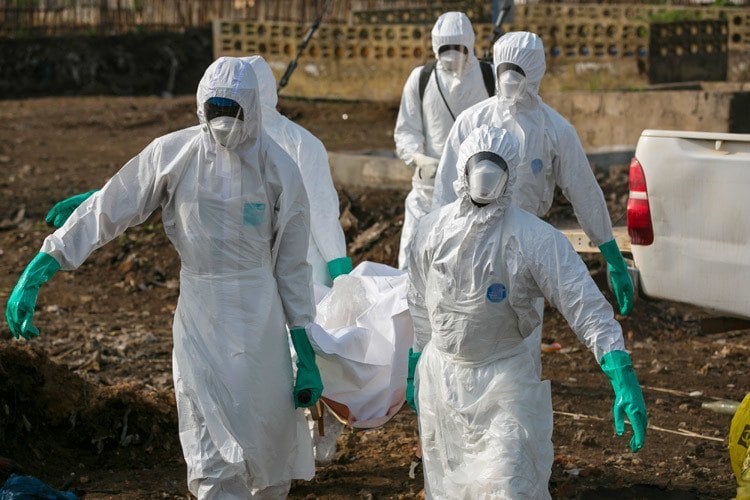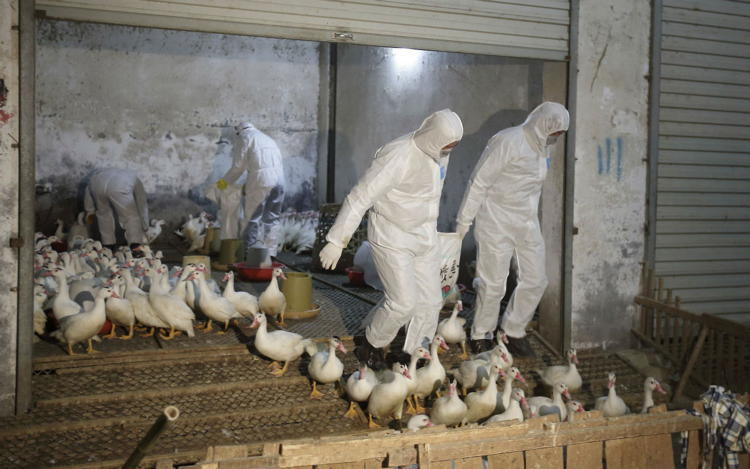Discover what a video game has to teach top researchers about epidemics, death, and human behavior.
In 2005, millions of people found themselves trapped in the clutches of a raging pandemic. Once exposed and infected, perfectly healthy individuals weakened quickly. Both humans and animals could spread the deadly disease and, within hours, entire cities were contaminated, eventually rendering some uninhabitable as a result of bio-waste.
Those that didn’t die right away, or had yet to be infected, fled from highly populated cities to reduce the risk of contracting the disease. The plague was dubbed “Corrupted Blood” and it originated, as all terrifying diseases do, from a spell cast by an ancient serpent blood god.

Hakkar The Soulflayer.
World of Warcraft (WoW) is a huge online role-playing game set in the fantasy Warcraft universe. Created by Blizzard Entertainment in 2004, it is one of the highest-grossing video games of all time, with more than 100 million user accounts over its lifetime. Players control individual avatars who interact with each other, complete quests, and gain abilities and skills.
Unexpectedly, it was in this virtual world that epidemiologists and disaster planners discovered an untapped resource in trying to predict mass economic and societal responses to a global pandemic.
Corrupted Blood: The Plague
The Corrupted Blood incident was never intended to turn into a plague; it was actually a coding accident. A spell cast by Hakkar The Soulflayer was intended to inflict a certain amount of damage on a character every few seconds and could then be passed between characters in close proximity to one another. Only very high level players could challenge Hakkar, so while the spell made fighting him difficult, it would not necessarily kill these hardened players.
The problem was that the virtual disease was only designed to stay inside Hakkar’s domain. However, through hunter pets and teleportation, it spread to the greater Warcraft world just like a real virus and suddenly, the game had a pandemic on its hands.

Dead WoW avatars killed by the Corrupted Blood plague. Image Source: Stick Twiddlers
Corrupted Blood created mayhem throughout WoW. It would instantly kill new and weak avatars, which not only brought in thousands of complaints from players with dead characters, but also left piles of skeletons and corpses scattered throughout the cities and towns. Users had their characters leave the cities for more isolated areas, or stopped playing the game altogether.
Some tried to heal, while others tried to infect. Players with the disease flagged themselves, but soon those without it flagged their avatars to avoid players who happily and maliciously spread the disease, and the marking was rendered useless. Blizzard even attempted to impose quarantines on players to contain the disease but these were not well received and in the end, Blizzard reset the servers and fixed the code.
But, long after the avatars gained control of the plague and fully repopulated, a surprising group took interest in the Corrupted Blood incident.
The Aftermath Of The Corrupted Blood Incident

Years after the incident, a number of top epidemiologists began publishing papers about the event. There were so many correlations between the users’ virtual reactions to the pandemic and documented historical responses that epidemiologists Ran Balicer, Eric Lofgren, and Nina Fefferman wrote several papers between them, all in the same year, that strongly advocated for researching the virtual world to help study and predict human behavior.
Epidemiologists use complex mathematical models to predict the spread of infectious disease and develop public health policies. These models, however, remove the irrational, human behavioral side of the equation. Furthermore, these models cannot be tested because it is of course unethical to release a pathogen into the greater population simply so researchers can observe the results.
So the next best thing would appear to be virtual role-playing games. When a pandemic like Corrupted Blood emerges, researchers are able to observe how a population responds to disease and how it is transmitted.
For instance, Balicer mentions in his study that there were fascinating similarities between Corrupted Blood and both Avian Influenza (bird flu) and SARS. In the case of bird flu, asymptomatic ducks spread the disease in East Asia to other parts of the world. In the case of the Corrupted Blood incident, animals held a very similar role.
In both cases, there were also similarly failed attempts at quarantine as well as a high potential for rapid global spread (due to airplanes in the real world and teleportation in WoW). Essentially, people in the real world, just as in the virtual world, don’t often get everything right, nor do they do what they are told.

Health officials in protective suits transport sacks of poultry as part of preventive measures against the H7N9 bird flu at a poultry market in Zhuji, Zhejiang province, China, on January 6, 2014.
Behavioral responses are simply hard to predict. In their joint paper, Fefferman and Lofgren discuss how role-playing games display social chaos in a way mathematical models cannot. Throughout the Corrupted Blood incident, players acted in irrational ways that epidemiology models wouldn’t account for. As a result, Fefferman has since incorporated these reactions into her simulations and has begun working with Blizzard to model virtual pandemics in other games for further data collection and research.
Important, instructive behaviors displayed in the virtual world included players putting themselves at risk by running to heal weaker allies, only to infect themselves, and on the other hand, players joyously infecting as many others as possible. Some users would send their infected avatars to work or the market (yes, there is an entire, virtual WoW economy and transportation system), just like people might still go to work with the flu because they need money or have no sick days.
Yet another interesting observation for the epidemiologists is what Fefferman refers to as the “stupid factor.” Players logged on to take a quick look at the epidemic and its accompanying hysteria for the sake of curiosity only to contract, then spread, the disease themselves. This type of irrational behavior is actually present in real epidemics as well. Purely mathematical models don’t account for journalists, public health researchers, or Average Joes who get closer than they should.
While a virtual world of fantasy characters is of course not a perfect simulation of real human society–for one, real death elicits a far more intense fear than virtual death–it gets epidemiologists a step closer to being able to accurately predict the complex outcomes of a large population in crisis. And happily, in the virtual world, if something goes wrong, there is always the reset button.





